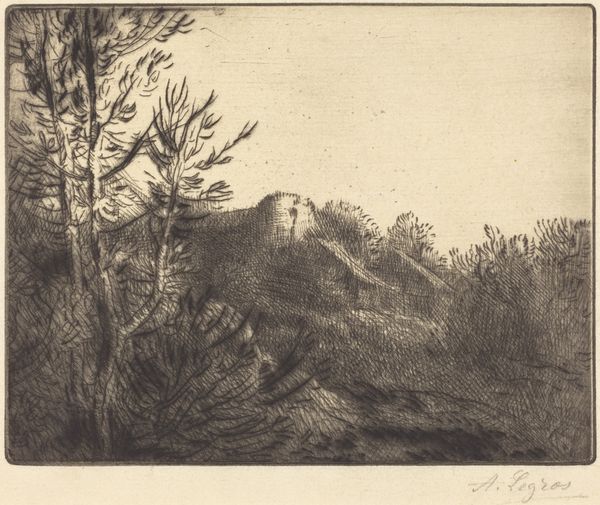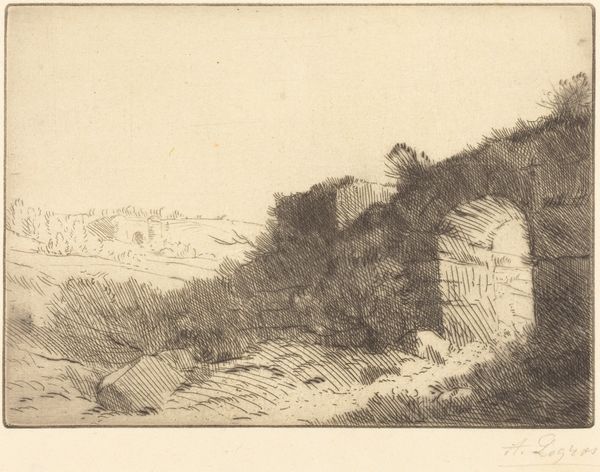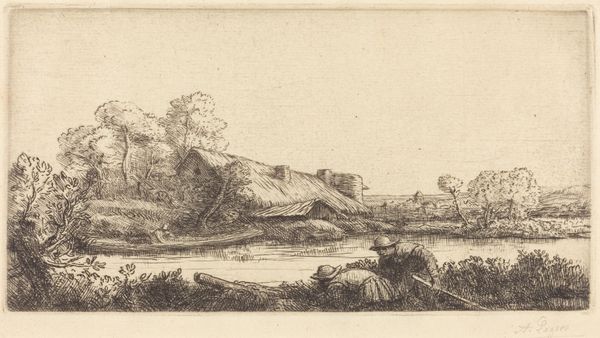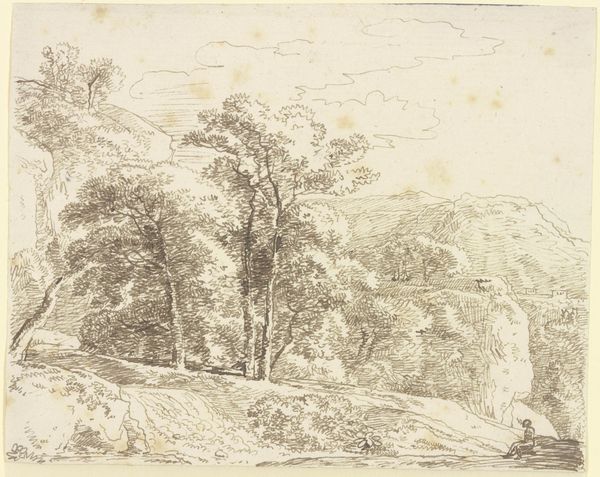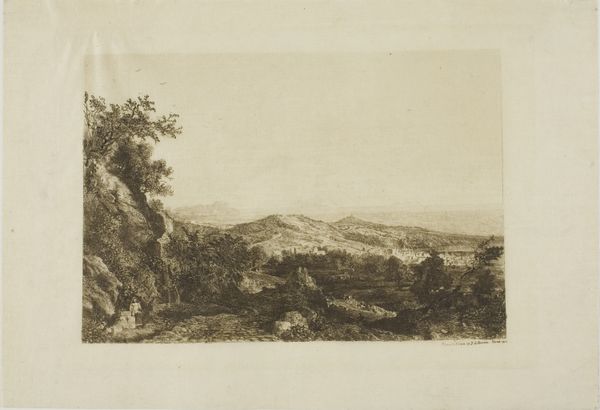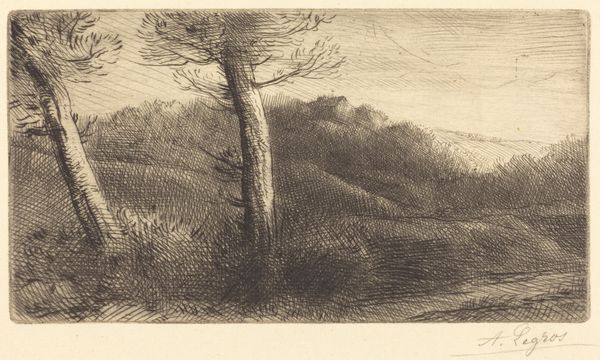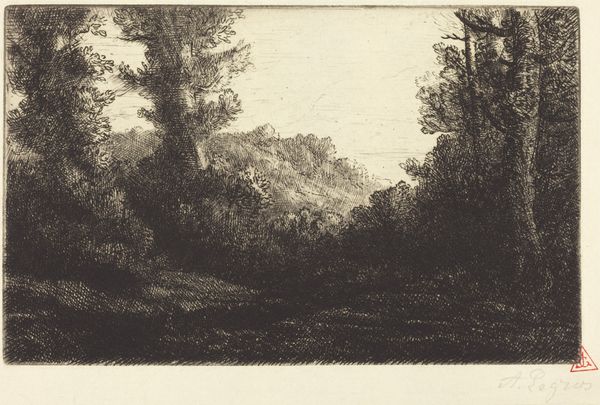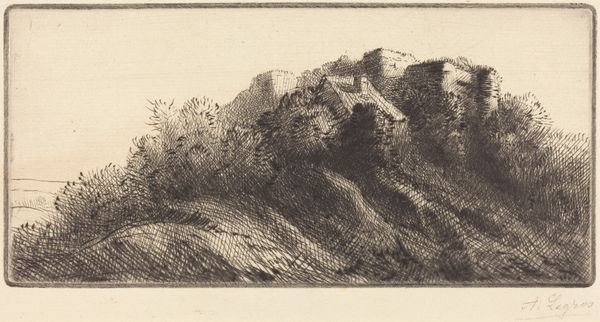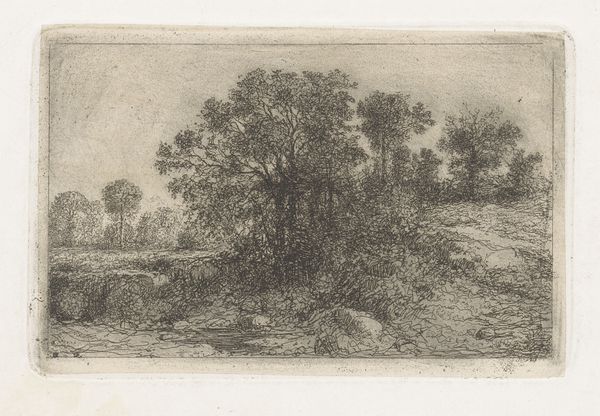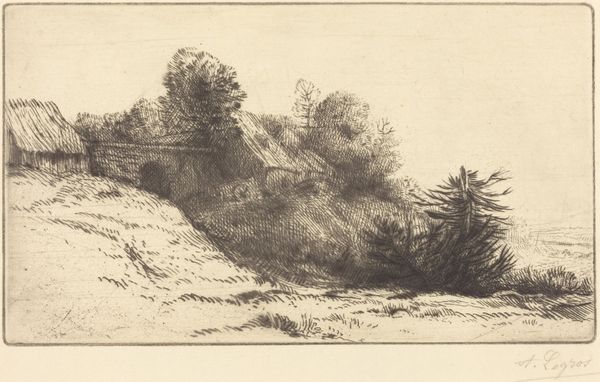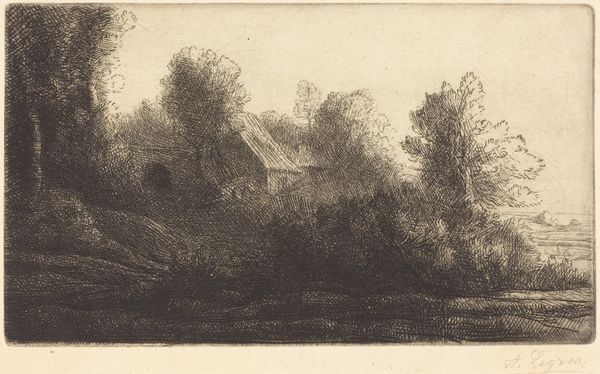
print, etching
# print
#
etching
#
landscape
#
realism
Copyright: National Gallery of Art: CC0 1.0
Editor: This is "Cottage on a Hillside" by Alphonse Legros, rendered as a print using the etching technique. It’s a pretty understated landscape, quite somber. How do you approach something like this? What's striking about it to you? Curator: What I notice first is the incredible labor involved in etching. Think of the artist's hand, meticulously layering lines to create tonal variations and texture. The very *process* of creating this print becomes central to its meaning. Editor: So, it's not just about *what* is depicted, but *how* it’s depicted, right? The technique itself speaks. Curator: Precisely. And consider the social context. Prints made art more accessible, breaking down the traditional hierarchies of art consumption. This wasn’t an oil painting for a wealthy patron; this was potentially for a wider audience, maybe even mass produced! Look closely at the cross-hatching... it seems rushed at parts. Was Legros meeting a deadline, a contract, catering to specific demand for rustic imagery? Editor: It makes me wonder about the life of the people living in that cottage. Curator: Exactly! The materiality informs this vision. Are we looking at an idealized view of peasant life, romanticizing the labor, or a more realistic representation of their connection to the land? Was it meant to challenge or reinforce the views of its presumed urban and sophisticated consumers? What did its creation demand from Legros? Editor: I never thought about how much labor goes into a print like this! Curator: And the distribution network! Prints relied on those too. So many human elements. Editor: Seeing it that way, the cottage isn't just a quaint building; it represents a whole system of production and consumption. Thanks! Curator: The layers of human experience embedded in the art! A pleasure.
Comments
No comments
Be the first to comment and join the conversation on the ultimate creative platform.

